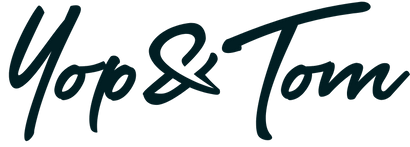Your Cart is Empty
Section
THIS is why you need a digital detox (and how to complete the digital detox challenge)
You can access the entire world at a touch of a button. Plan meetings, make notes, create schedules… everything’s just a few clicks away. It’s accessible and easy so… why would you ever want to take a digital detox?
It’s actually the ease and convenience that add to the need to go offline.
The online world has offered us connections that previously we could only dream of (we know, we’re making ourselves sound old here…).
We can collaborate on projects with people who are thousands of miles away, get inspired by creations that were previously out of our reach and access information in less time than it takes to step outside our front door.
With all that good stuff it can be tempting to ignore the more challenging side of the digital world.
From endless distractions to limited creativity, comparison traps and never-ending noise, it’s these challenges that inspire so many of us to take digital detoxes, as we discover the benefits of unplugging. Even if it’s just for a day or two.
Here’s why you need to take a digital detox.

Digital distractions are limiting your creativity
It’s hard to hear but oh-so-true. Those hours spent online, scrolling through Pinterest, looking at other people’s work? They’re not doing anything for your creativity.
Research shows that “creativity happens when your mind is unfocused, daydreaming or idle”.
Our biggest and best ideas come to us when we let our minds wander, yet our days are spent in deep focus. When we’re not working or studying, we’re on our phones, watching Netflix, or finding another way to keep our brains busy. What we actually need to be doing, is giving our brains a break and letting the good ideas come to us.

Photo by Andraz Lazic on Unsplash
Try moving your digital detox outside and take yourself on a daily walk (without your phone). A study has shown that people who take daily walks tend to think more creatively. If it was good enough for Apple’s creative genius Steve Jobs, it’s good enough for us.
The online comparison trap is limiting your ideas
Ah, the comparison trap. You see regular posts from your old friend Sara, sharing news of her latest promotion, the announcement of her engagement and some beach photos from her recent trip abroad. And, between it all, there’s a post about her endless butterflies before a public speaking engagement, making you think that if she’s being vulnerable about that... then the rest of her life must be perfect.
But there are always things you don’t see. The family arguments about the wedding, the gruelling long hours invested to get that promotion, the challenging colleague, the crippling anxiety before every big meeting…
There’s so much more to people’s lives than what we see online. But, instead, we focus on what we can see. And we note the differences with ourselves. We pick away, until we feel insignificant and insecure.
When you step away from the online world, you automatically stop looking at everyone else’s ideas and focus on your own instead. You give your fledgling ideas room to breathe and grow. You allow them space to stew and simmer away in the back of your mind, rather than starting life by hearing the words “you’re not good enough, you never will be”.
Your ideas can evolve into something powerful, rather than being deleted right away.
You’re missing out on more original inspiration from the real world
The most ironic thing about the digital world? We go there to be inspired by something “different” but we all end up looking at the exact same things.
In the digital world, you’re limited by what’s been curated for you by other people. But in the physical world, you can look where other people can’t. You become the curator.
Try to see your local area through fresh eyes, and act as a curator of ideas rather than the consumer. Remember, nobody else will have your unique experience or perspective (unlike the digital world, where it’s the curator who decides how things appear).
Better productivity and wellbeing are waiting for you offline, with a slow living approach
Slow living is one of the biggest trends of the past few years and there’s a big reason for this. As our lives become increasingly busy and distracted, as we spend more and more time online… our bodies naturally start to crave rest, relaxation and a slower pace of life.
The concept is simple. Literally. Slow living is all about simplifying your life, removing the unnecessaries and leaving empty space in their place.
Instead of celebrating being busy, slow living celebrates a life where actions are taken for their impact, not to fill up space on a calendar.
Bring some of the art of slow living into your own life by reevaluating how you spend your time. What’s working for you? And what’s just another distraction? Go through your digital devices, your apps, your social media platforms and remove anything that isn’t serving you.

How to complete the digital detox challenge
Now you know why a digital detox can help your creativity, it’s time to find out how to complete a digital detox challenge.
Start small
The original digital detox challenge is just 24 hours long. What you do on that day, is up to you. If you’re desperately craving time away from all your digital devices, you could go cold turkey and cut them all out for the entire digital detox day.
If that feels a little extreme, try taking a gentler approach. Pick a social media platform that you know you reach for every time you pick up your phone (Instagram’s our biggest culprit!) and delete the app for just 24 hours.
Or, pick somewhere in the middle. Turn off your phone for 24 hours (remember to tell people first so that you don’t cause any unnecessary worry!) but keep your TV, iPad and whatever else you fancy to hand.
Observe your emotions
Over the course of your digital detox challenge, check-in with yourself to see how you’re feeling. Do you feel calmer? More present? More inspired?
Write those benefits down so that you can remember that feeling. In the same way that writing a completed task down helps the sense of accomplishment stick in your mind, writing down that emotion can help you recall the feeling when the need arises. The next time you’re feeling stressed, distracted or uninspired, you can remember your digital detox day as something to come back to.
Journal your progress
Why not use a journal to help you track your digital detox. It's a great way to keep consistent and track how you are feeling over time. Do you find it easier each time? Can you switch off from distractions quicker? If you are a bullet journaler you can use a habit tracker, otherwise just use a lined journal to jot down a few notes. Look back at them next time to see how you progress.
Give yourself the space to dream
Wondering what to do instead? Hold space for whatever your mind needs the most:
- For wellbeing, track your mood in your bullet journal to see how it correlates with your use of digital devices (get inspired by one of these dot grid journals)
- For creativity, switch time on your phone for time writing your morning pages (a simple lined journal is perfect for this)
- For productivity, experiment with paper planning so that you don’t have to lose focus and open up your phone/laptop every time you want to check your schedule
Treat a digital detox day as another tool in your toolbox
Once you’ve completed your first digital detox day, it becomes a tool for you to draw on as much or as little as you need to.
You might find that a digital detox retreat becomes a much-loved part of your vacations, as you fully immerse yourself in relaxation time and unplug from the rest of the world.
Or, it might be a simple case of taking a digital detox day as and when the need arises.
Best of luck! It’s not as hard as you think, we promise.

